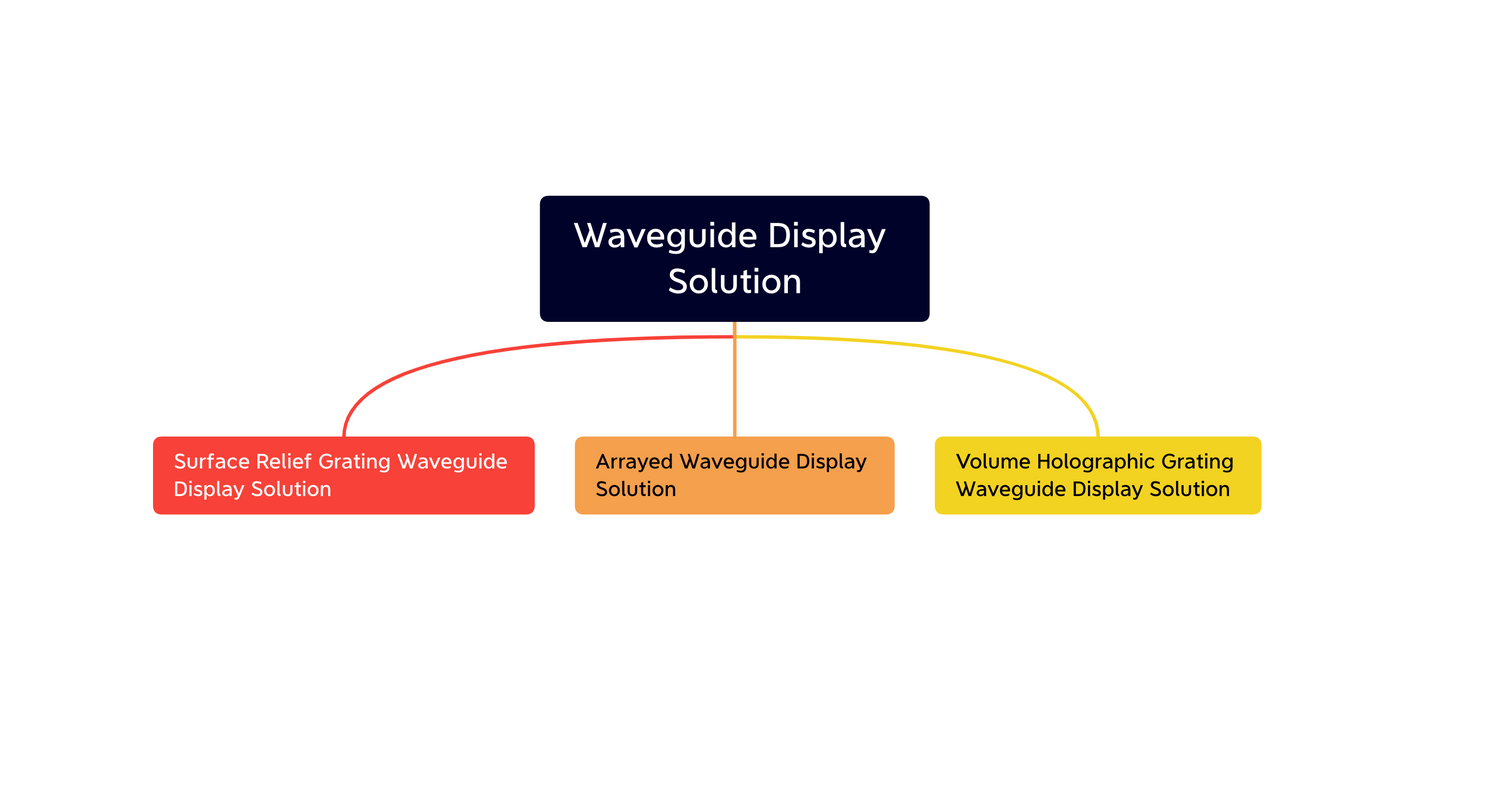
3 Major Waveguide Solutions for the Future of AR Glasses
The optical imaging system of AR glasses consists of micro displays (such as LCOS, LBS, Micro OLED, Micro LED, etc.) and optical elements (prisms, freeform surfaces, BirdBath, waveguides, etc.). Common configurations include "LCOS + Prism," "Micro OLED + Custom Curved Surface," and "LCOS/DLP/Micro LED + Waveguide."
Non-waveguide solutions have the advantage of mature design and fabrication technologies, but the disadvantages are also apparent. These include an inability to balance three critical parameters: field of view (FOV), eye movement range, and size. Such solutions usually come with a large size and restricted eye movement range.
Waveguide solutions break through these limitations, allowing these three factors to be independently controlled. They can be made very thin and light, with the potential to become the ultimate optical solution for AR glasses.
Currently, there are three main waveguide solutions:
Array Waveguides (Geometric Waveguides)
Array waveguides achieve image output and an expanded eye box through the stacking of reflective mirrors. Coupled light enters the waveguide and multi-reflection occurs through reflective surfaces or prisms until the light reaches the front of the glasses. It then encounters a "half-reflective, half-transmissive" mirror array. Each mirror reflects part of the light out of the waveguide into the eye, while the rest continues to travel within the waveguide. This process of "reflection-transmission" repeats until the last mirror in the array reflects all remaining light into the eye.
Array waveguides can achieve high standards in image quality, including color and contrast, but there are three challenges: 1) Difficulty in reducing the volume of the coupling section, 2) Inherent issues with bright and dark stripes in the waveguide, and 3) Challenges in mass production. Due to complicated manufacturing processes and low yields, large-scale production of eyewear products is rare.
Surface Relief Grating Waveguides
These waveguides currently hold a significant share in diffractive waveguide AR glasses. Created using traditional semiconductor micro-nanofabrication processes like electron beam exposure and ion etching, these waveguides imprint thousands of gratings on a resin layer coated on a glass substrate through nano-imprint technology.
Surface relief grating waveguides offer advantages such as thinness, a large FOV, and extensive eye movement range. They are widely considered one of the mainstream display technologies in the AR industry.
Volume Holographic Grating Waveguides
This technique starts with coating an organic thin film on a glass substrate, then exposing the film using two laser beams, creating alternating light and dark interference stripes. These stripes induce different exposure characteristics in the material, forming a periodic spatial distribution with different refractive indices at the molecular level.
Volume holographic grating waveguides possess extremely high diffraction efficiency, large FOV, excellent transparency, thin structure, suitability for large-area fabrication, short processing cycles, low cost, and high yield. However, the technique is challenging, requiring high standards in materials, system design, and manufacturing processes. Currently, limitations in available materials mean that aspects like FOV, light efficiency, and clarity have not yet reached the level of surface relief grating waveguides.
